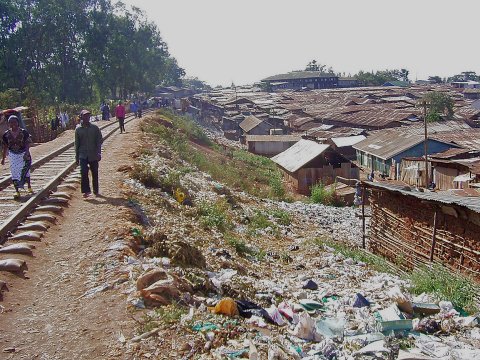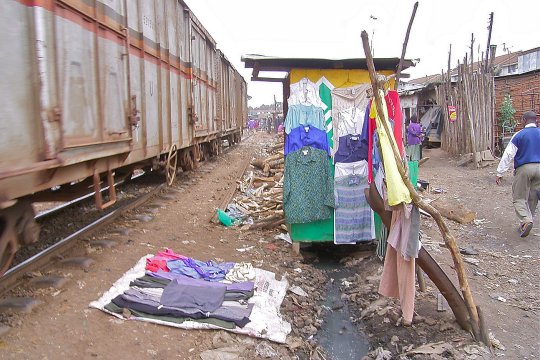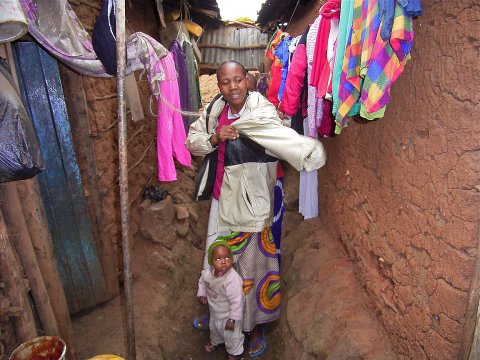|
John Tyman's Cultures in Context Series AFRICAN HABITATS : FOREST, GRASSLAND AND SLUM Studies of the Maasai, the Luhya, and Nairobi's Urban Fringe |
|
|
|
|
|
John Tyman's Cultures in Context Series AFRICAN HABITATS : FOREST, GRASSLAND AND SLUM Studies of the Maasai, the Luhya, and Nairobi's Urban Fringe |
|
|
|
|
 |
| 513. The reason for the trees on the left of the railway is that the line here marks the boundary between informal settlements and the homes of wealthier people. There is no room for trees in Kibera. |
 |
| 516. The shortage of space in Kibera is obvious here from the clothing stall perched over the drain beside the railway, and from the houses on the right close to the track. |
 |
| 518. Laundry is hung up to dry in back lanes, though in the case of older homes it may be soiled my contact with mud walls. |

![]()
Text, photos and recordings
by John Tyman
Intended for Educational Use
Only.
Contact Dr. John Tyman at johntyman2@gmail.com
for more information regarding
licensing.
![]()
www.hillmanweb.com
Photo processing, Web page layout,
formatting and hosting by
William
Hillman ~ Brandon, Manitoba ~ Canada